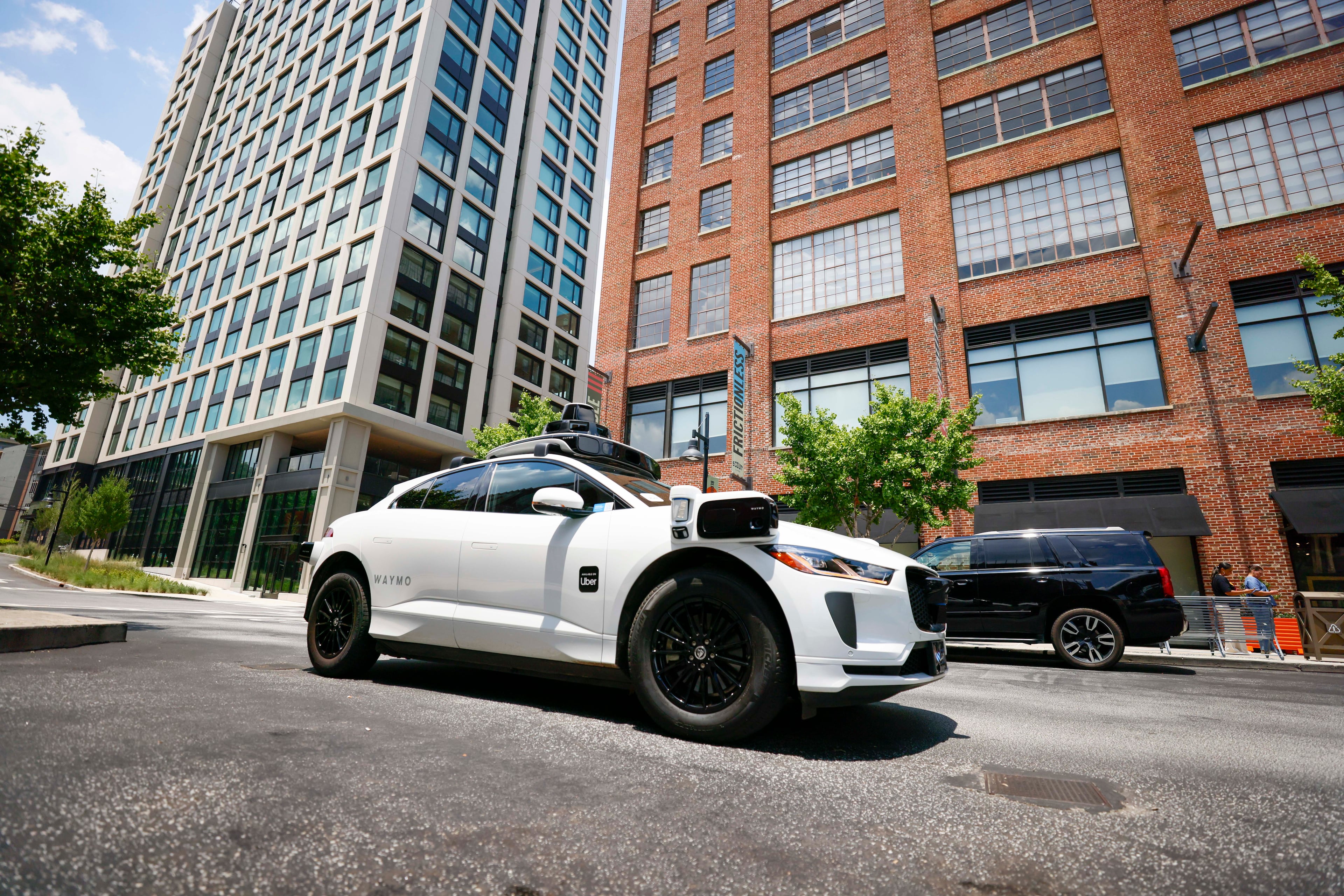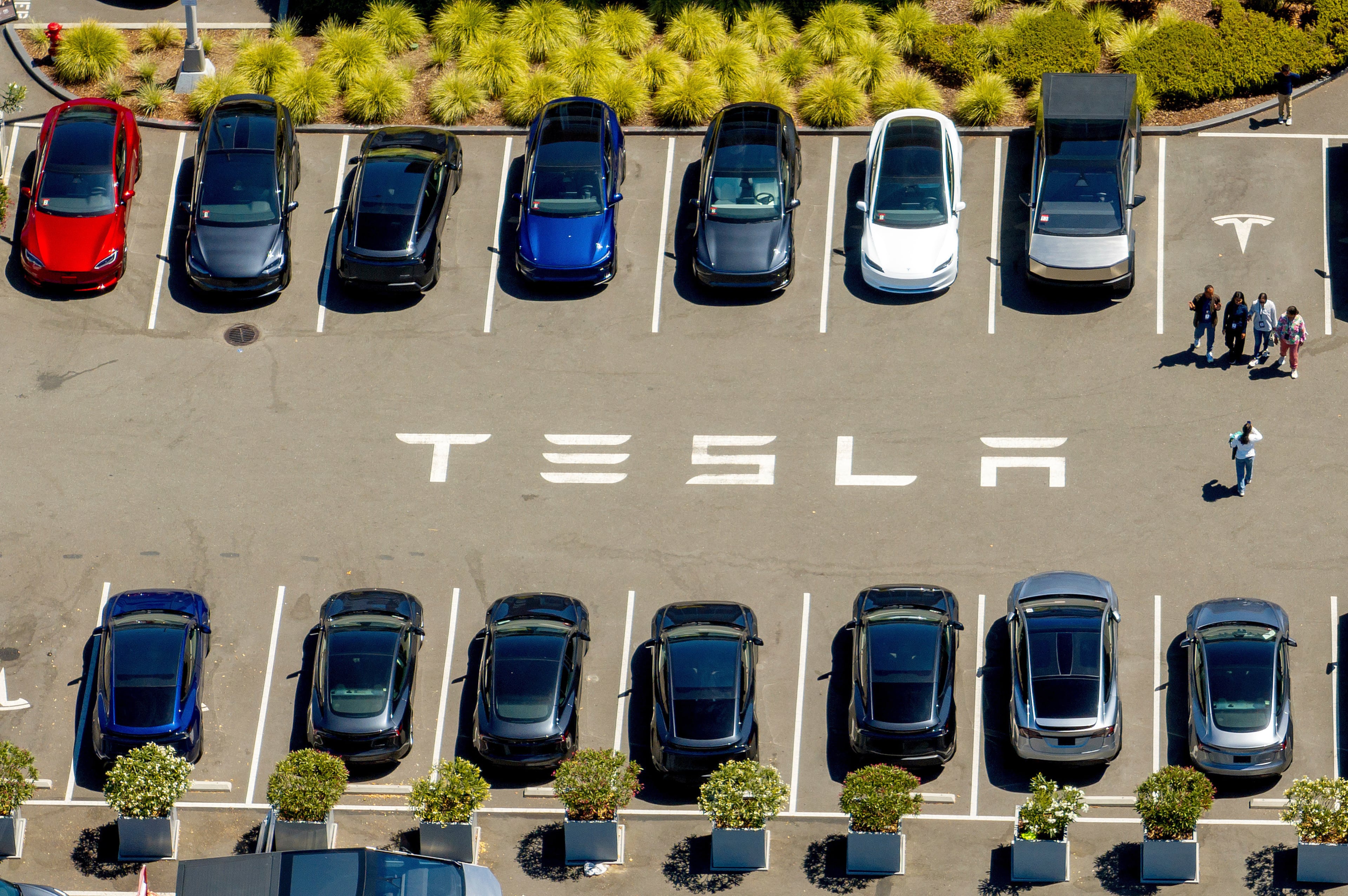Self-driving taxis come to Atlanta

The first self-driving cars have arrived in Atlanta. You may have seen them downtown — nearly silent white Jaguar electric cars covered in sensors, gliding around with no one behind the wheel.
They’re operated by Waymo, a subsidiary of Google’s parent company, Alphabet. They cover a 65-square-mile area that includes much of downtown, Midtown and Buckhead, with plans to expand.
Their arrival has some road users nervous and others excited. Let’s explore the state of self-driving technology in Atlanta and beyond.
It’s hard to keep them all straight
Waymo has an early lead in self-driving taxis in the U.S. The company has the most vehicles on the road (more than 1,500) and the most service areas (five — Los Angeles, Phoenix, San Francisco, Atlanta and Austin), with Washington, D.C., on the way.

Two other companies have driverless robotaxis accepting commercial rides. May Mobility has cars operating in Peachtree Corners, and has partnered with Lyft to bring autonomous vehicles to Atlanta with an initial deployment using human “safety operators.” They’re also operating in parts of Minnesota and California. Tesla prominently launched its Robotaxi service in Austin in June.
Several others could be on the way soon. Amazon-backed Zoox is testing its minibus-like driverless pods in several cities, as well as starting its testing fleet in Atlanta. Avride is working with Hyundai and plans to roll out a taxi service in Dallas later this year.
One prominent name has left the business. General Motors shut down its Cruise robotaxi unit late last year. CEO Mary Barra said the driverless taxi market was simply “not our core business” and “very expensive.”
How do I order a robotaxi?
You’ll need the Uber ride-hailing app to use a Waymo driverless taxi in Atlanta. In some other cities, Waymo has its own app, Waymo One.
Uber may send you a driver or a driverless car, though the company says it alerts riders if a driverless car is on the way in case they choose to opt out of that service.
How do robotaxis see the world around them?
Waymo’s cars map the world around them using a combination of cameras, radar and Lidar (which is similar to radar but uses pulsed lasers instead of radio waves). Most rival companies employ the same technology.
Tesla uses cameras alone, which concerns some safety experts. Just days after the company’s self-driving fleet launched, the National Highway Traffic Safety Administration initiated a safety investigation into the camera-only system over reports of erratic driving.
Are robotaxis remotely monitored?
Waymo calls the software that powers its self-driving system the “Waymo Driver,” which can confusingly sound like there’s a human involved.
Waymo does not have a human actively monitoring every car at all times, but riders can alert a human to a problem and get help either through the app or a help button in the car.
That human cannot remotely control the car. Waymo says its “fleet response” teams give the software “additional information to contextualize its environment.” They can help the Waymo Driver software make decisions. However, “The Waymo Driver does not rely solely on the inputs it receives from the fleet response agent, and it is in control of the vehicle at all times.”
What do early robotaxi users say?
We heard from riders who were satisfied with their Waymo experience and others with concerns.
Vincent Lombardozzi, 39, of Jersey City, New Jersey, took a Waymo in Los Angeles last year. “At any point, I did not even feel slightly unsafe,” he said. “It handled all the traffic well. It was a fantastic experience.”
Does this mean I’ll be able to buy a self-driving car soon?
The technology behind self-driving taxis could someday power cars you can park in your driveway. However, that day isn’t likely soon.
Robotaxi services operate in limited areas that companies have carefully mapped. A system that can operate on any public road may be further away.
The SAE (formerly the Society of Automotive Engineers) has a six-level scale to describe a car’s driving automation.
- Level 0 involves warnings without interaction.
- Level 1 uses adaptive cruise control or lane centering.
- Level 2 combines those two functions.
- Level 3 is described as “traffic jam chauffeur.” It can take charge of driving in a limited, specific situation, but it requires a human driver to be available to take over when situations evolve.
- Level 4 is a system capable of self-driving under limited conditions and may even be employed without a steering wheel or foot controls. This is where the current crop of robotaxis fits in.
- Level 5 is unrestricted self-driving under any conditions.
Every system for sale in the U.S. today is a Level 2 system. That includes Ford’s BlueCruise, General Motors’ Super Cruise and Tesla’s Full Self-Driving (Supervised). Only Mercedes-Benz sells a Level 3 system that lets the driver look away under limited circumstances, and that system is offered only in Nevada and parts of California.
Mercedes-Benz’s early experiences illustrate how complex it could be to bring self-driving to the masses beyond confined areas.
The company recently noted that we ask police to ticket distracted drivers, but some states now allow Level 3 autonomy, which tells drivers it’s safe to look away and let the car drive. Mercedes proposed turquoise exterior lights to alert police when a self-driving system is engaged.
Liability laws, insurance practices and more must evolve as the technology spreads.
Sean Tucker reports for Kelley Blue Book from Washington, D.C., where he has covered the auto and energy industries for a quarter-century.
The Steering Column is a weekly consumer auto column from Cox Automotive. Cox Automotive and The Atlanta Journal-Constitution are owned by parent company, Atlanta-based Cox Enterprises.


